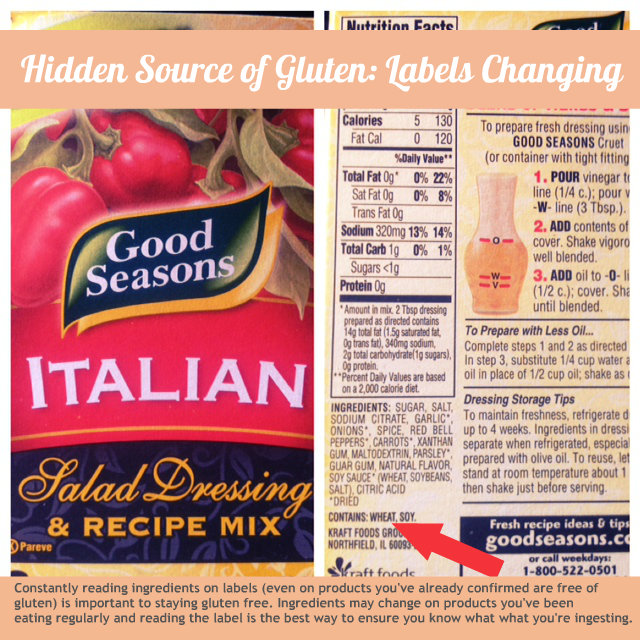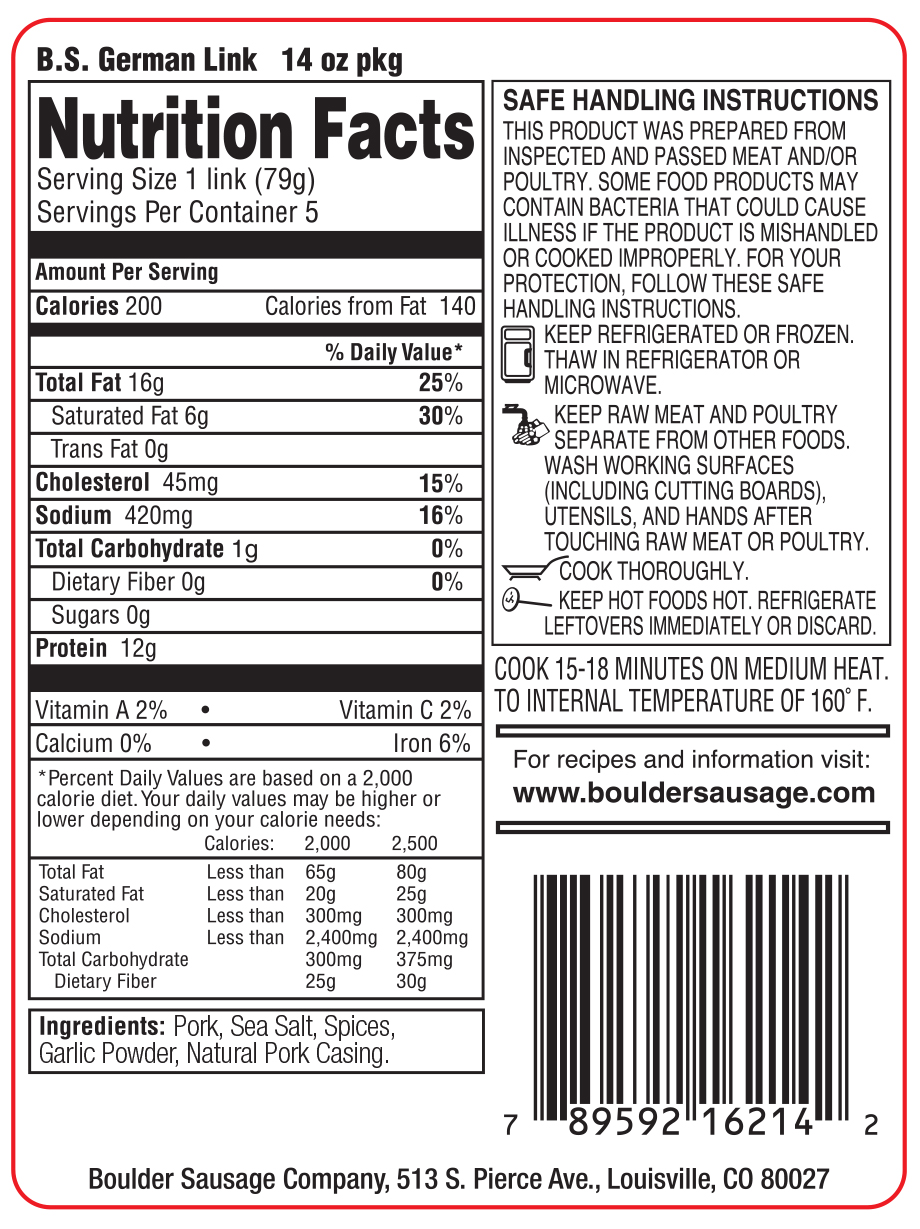42 reading labels for gluten
How to read Gluten-free labels and what to look for We also recommend finding available resources for reading gluten-free labels. The Celiac NZ Ingredient list booklet (2nd Ed) is a great source. There are some foods that are naturally free from gluten, and do not need to mention this on their packaging. This includes eggs, fruit and vegetables (unrefined) and animal protein (unseasoned). TIP 3: Gluten Free Label Reading 101 - gluten free tips and tricks - gfJules Gluten Free Label Reading 101. You know how it feels. You're walking down the aisle at the grocery store and you stop to pick up a product that you've purchased before, you glance at the label in passing, and you see it: WHEAT! Your heart sinks. You start to feel shaky.
3 Tips for Gluten-Free Label Reading *A product that is labeled gluten-free may include the term "wheat" in the ingredient list (such as "wheat starch") or in a separate "Contains wheat" statement, but the label must also include the following statement: "The wheat has been processed to allow this food to meet the Food and Drug Administration (FDA) requirements for gluten-free foods."
Reading labels for gluten
Reading Food Labels | BeyondCeliac.org While label reading can seem overwhelming at first, you'll become confident over time. Download the Beyond Celiac Step by Step Guide to Reading Gluten-Free Labels to help you navigate the supermarket shelves. Download: Step by Step Guide to Reading Labels Thanks to Cabot Creamery, Crunchmaster and Glutino for making this resource possible! How to Read a Food Label - Gluten-Free Living Right now a gluten-free label means only that the item does not include any gluten-containing ingredients. The only "rule" is that labels have to be "truthful with no misleading information." You might initially depend on the gluten-free label, but start using ingredient lists as your guide when you get more confident in your ability to read them. Learning to Read Nutrition Labels for Gluten - Laulima Kitchen Gluten Free Scanning Apps Aren't 100% Accurate 2. Learning To Read a Nutrition Labels Takes Practice 3. Manufacturers Frequently Change Ingredients 4. Processed Foods are Likely to Contain Gluten 5. Wheat Free Doesn't Mean Gluten Free 6. Some Advisory Statements are Optional for Manufacturers to List on Nutrition Labels 7.
Reading labels for gluten. Gluten - Wikipedia Gluten is a structural protein naturally found in certain cereal grains. Although, in general, "gluten" only refers to wheat proteins, in medical literature it refers to the combination of prolamin and glutelin proteins naturally occurring in all grains that have been proved capable of triggering celiac disease.These include any species of wheat (such as common wheat, durum, spelt, … Gluten-free diet - Better Health Channel One recipe for gluten-free plain flour involves mixing together: 6 cups rice flour; 2 cups potato starch; 1 cup gluten-free cornflour. To make gluten-free self-raising flour, add gluten-free baking powder to the above mix, and gums as described above. Baking powder can be made from: ¼ cup bicarbonate soda; ½ cup cream of tartar. Reading Labels & Finding Gluten Free Food - The Savvy Celiac Reading labels for Gluten. In light of Shirley's question, I thought I would make a quick list of things to know when reading labels. Sample Label. For a cool visual aide, I found one-glutenty product in my cupboard that highlights several of the points below, took a picture of it and highlighted some of the things mentioned in the list. Reading Labels: Is It Really Gluten-Free? Code Words for Gluten When you are reading labels, be vigilant for things that sound safe but are not. All that reading might seem like a chore. This skill might take a while to perfect, but it's worthwhile to keep your body free of toxic gluten. The following ingredients are often code for gluten: Avena sativa.
38 Foods Where Gluten May Be “Hidden” 23/03/2021 · If you’re sensitive to gluten derived from wheat, barley, and rye, you must be more diligent about reading food labels. Check out our article: 3 Tips for Reading Gluten-Free Food Labels . To add to the confusion, some processed food items contain gluten – like certain salad dressings – but unless you read the ingredients label, it may not be obvious. Gluten: Tips for Finding It on a Food Label - WebMD "Reading the ingredients label on the foods you buy and knowing what to look for are the keys." - Shelley Case, RD Gluten Foods Double-check the ingredients label on these items, as they're... 15 Surprising Foods with Gluten You Didn't Know About - Eat This Not That 08/08/2019 · Checking your labels is the easiest way to figure out if your beef patties, sausages, and hot dogs aren't being held together by gluten products. You also need to be wary at the deli counter for cross-contamination. Slicers aren't normally cleaned in between meat, and ones with gluten products might transfer to your slices of deli meat. Deli meats are monitored by a different Label Reading & the FDA | Celiac Disease Foundation The Celiac Disease Foundation Medical Advisory Board supports the <20 ppm of gluten standard for gluten-free labeling. According to Dr. Peter Green, Director of the Celiac Disease Center at Columbia University, "The 20 ppm is a scientifically determined level of gluten that has been shown to be tolerated by those with celiac disease.
Gluten: reading a label - AGA GI Patient Center When a product is not labeled "gluten free," you can determine if it is safe to eat by reading the ingredients label: Read the "Contains" allergen statement at the bottom of the label. If wheat is listed in the "contains" statement, the product is not gluten free. Gluten-Free Foods | Celiac Disease Foundation Many commercially-available products are labeled “gluten-free,” but there will be some that are not; this is why proper label reading is important. It is also important to remember that “wheat-free” does not necessarily mean “gluten-free.” Be wary, as many products may appear to be gluten-free, but are not. Is It Gluten Free? Reading Food Labels - Three Bakers To further complicate matters, there are several gluten-free labels available for companies. Advisory Labels Advisory labels are also voluntary, but usually present. These are the the notices under the ingredients list that say "May contain wheat" or "Produced on equipment that also produces products that contain wheat". Reading Labels for Gluten - YouTube A pediatric dietitian offers tips about how to read food labels and avoid products containing gluten. Fiegenbaum, RD, CDCES, L...
How to Read Food Labels for a Gluten-Free Diet - Cupcakes & Kale Chips Others are names for gluten-containing grains (or derived from those grains). Skip any items with the following ingredients on their food labels: Wheat (bran, starch, germ, or berries) Hydrolyzed wheat protein Wheat starch/modified wheat starch Rye (kernels, berries) Barley (malt, extract) Bulgur Orzo Kamut Semolina
Gluten-free diet - Mayo Clinic 11/12/2021 · Gluten-free food labels. When you are buying processed foods, you need to read labels to determine if they contain gluten. Foods that contain wheat, barley, rye or triticale — or an ingredient derived from them — must be labeled with the name of the grain in the label's content list. Foods that are labeled gluten-free, according to the U.S. Food and Drug …
Label Reading for Gluten | Children's Hospital of Philadelphia Gluten is a protein found in wheat, barley and rye. Today, in this video, we are going to discuss our five step process for label reading to determine if a product is gluten free. Step 1: determine if the product is naturally gluten-free. Naturally gluten-free foods include fresh meat, chicken, fish, eggs, fruit, vegetables and dairy.
PDF Tips for Gluten-Free Label Reading 1 *A product that is labeled gluten-free may include the term "wheat" in the ingredient list (e.g. wheat starch) or in a separate "Contains wheat" statement, but the label must also include the following statement: "The wheat has been processed to allow this food to meet the Food and Drug Administration (FDA) requirements for gluten-free foods."
Are You Reading Your Gluten-Free Labels? Already, at 6, he knows to read the gluten-free labels. Yet, as we grow and follow this lifestyle, is this something we take for granted? Checking your gluten-free labels should be HIGH PRIORITY in following a gluten-free lifestyle - whether you have Celiac Disease, gluten-intolerance or are fighting any Auto-Immune Disease.
4 Steps to Reading Labels on a Gluten-Free Diet - Spoonful Blog Step 1: Look for Certification Seals When shopping for gluten-free products, look for any of the 5 certification seals shown below. These seals guarantee that the product has been tested by a third party and that the level of gluten is less than 10 parts per million (ppm). This is even stricter than the FDA requirement of 20 ppm.
Tips for Shopping & Reading Labels - Gluten Free 101 One of the most important things to do when you're looking for gluten-free items is to read the labels. You can't assume a product doesn't have gluten because more and more of them do or could potentially have gluten. It's never a good idea to go to the store, make a purchase, and not look at the label.
Celiac Disease: 5 Tips for Reading Gluten Free Labels To ensure that you are not ingesting gluten, you have to become competent in reading food labels and avoiding foods containing gluten. Below are 10 tips to help you determine which foods are celiac-safe and which are not. 1. Don't just check food labels: personal care products may also contain gluten. Be sure to check the labels of not just ...






Post a Comment for "42 reading labels for gluten"